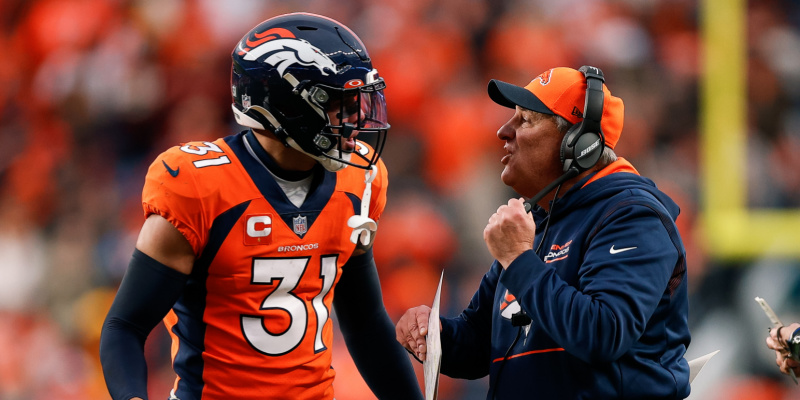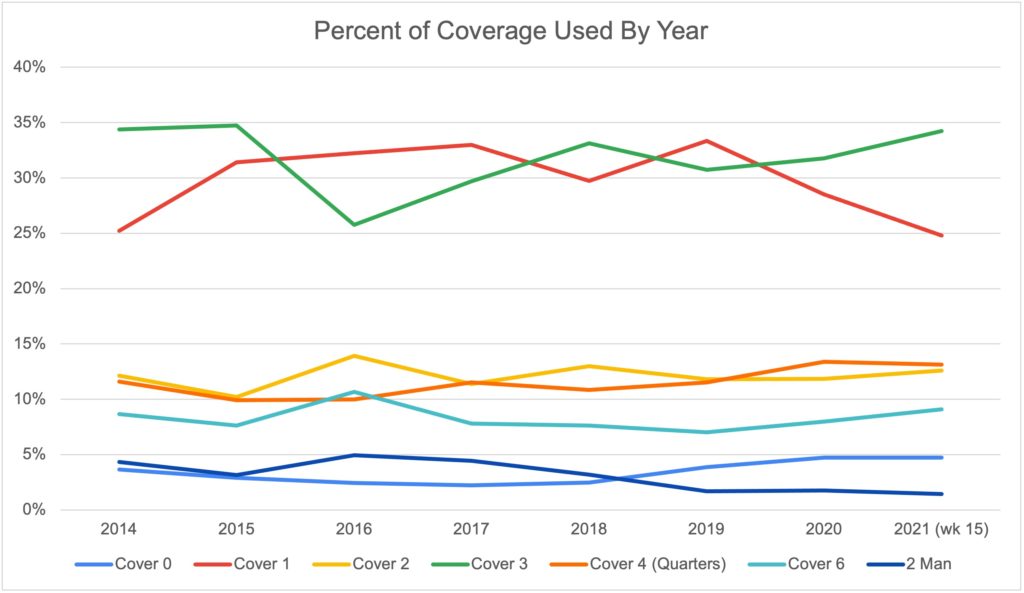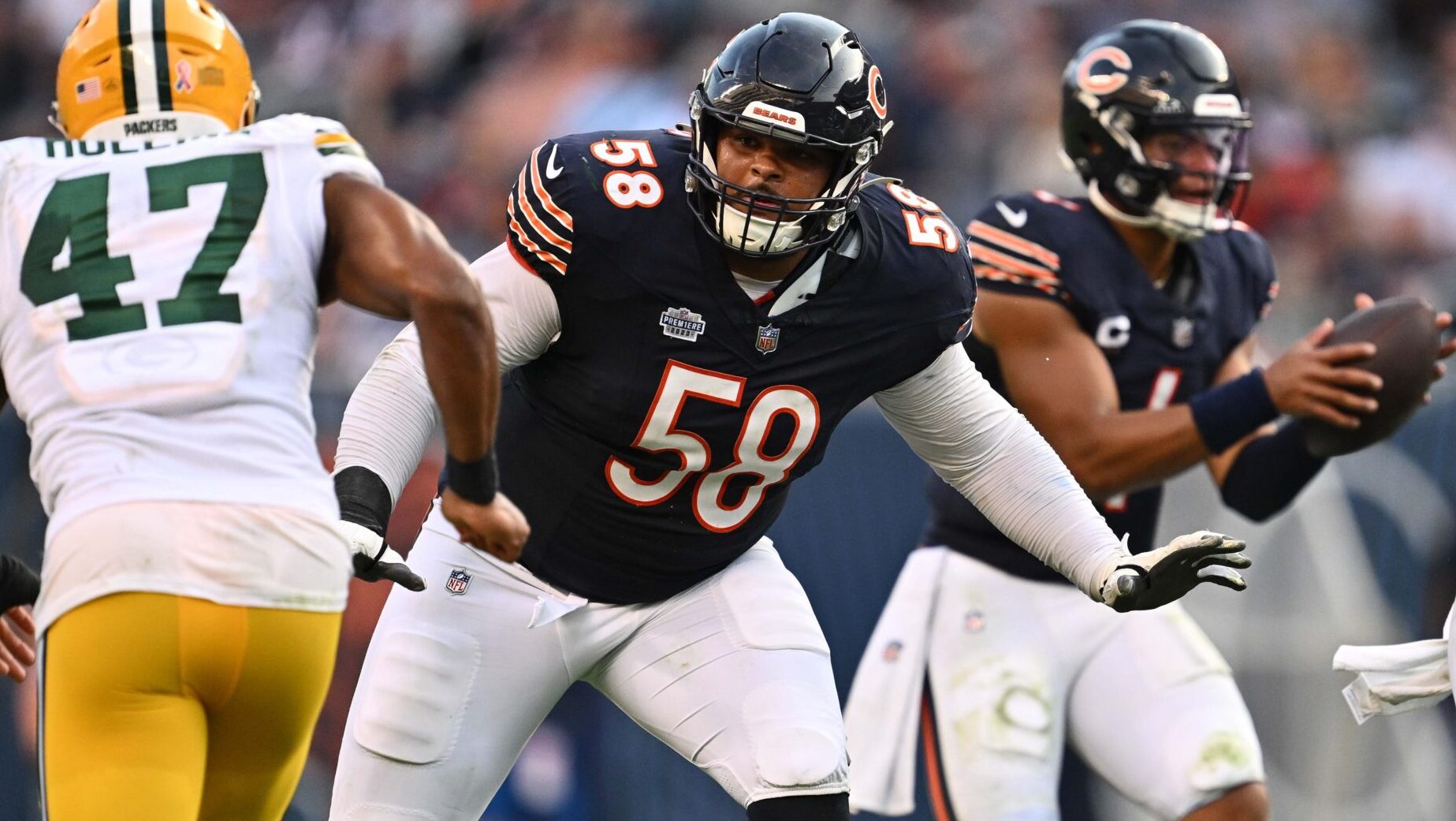Analysis
1/1/22
4 min read
NFL Coverages Are Constantly Evolving In the Modern Era

As NFL offenses started to evolve in the early 2010s with the increased use of three, four, and five wide sets, offenses shifted from a focus on the running game to the passing game. Offenses have quickly started implementing more spread formations and concepts into their playbooks in an effort to continue to adapt and find new ways to beat defenses. The popularity of base defense (3-4/4-3) has continuously become less and less popular, while the nickel defensive package has started to dominate the NFL. The nickel package replaces one linebacker for an extra player in the secondary.
Since 2014 (when PFF started recording data), nickel defense usage has continued to rise in nearly every season. The 2014 season was the only one during this span that the nickel package hasn't been used for at least 50% of all defensive snaps in a season. Through Week 15 of this season, teams have used the nickel package a record high 60.9% of all defensive snaps. This trend is the same in college as well. This regular season, nickel was used on 63.9% of defensive snaps.
As the NFL continues to be more pass-oriented, defenses and coverages continue to adjust for what offenses are doing. In turn, it seems as though defenses that were more popular prior to the surge of pass-heavy schemes can be used to create confusion.
“The 90s consisted primarily of cover 2 and zone defenses, operating out of a base 3-4, which was made popular due to Lawrence Taylor,” Former NFL Head Coach Chris Palmer says.
As nickel was becoming more popular in the early 2000s, not all teams practiced much against it.
“It threw the players off, the first time we saw it (nickel) against our ace personnel,” Coach Palmer says. “Nickel defense has become more prominent on first down because coaches are always looking for matchups… 3 wide sets, 4 wide sets, throwing more has caused all offenses to look for matchup advantages when they put additional receivers on the field.”
Some defensive coaches are using the trend towards the nickel package to their advantage. With players seeing nickel more often throughout college and seeing less base defense, some teams use this to their advantage.
“(Broncos Head Coach) Vic Fangio doesn't often match personnel pre-snap, which can confuse quarterbacks. He’ll stick to a base defense look instead of shifting his defense, which is not something many offenses practice against,” Coach Palmer notes.
Utilizing base defense is one way defensive coordinators are able to create confusion, as younger QBs who haven’t seen much base defensive sets in their limited NFL experience.
In addition to the rise in the use of the nickel package, there has been a fluctuation in coverage type used by season since 2014. One of the most prominent differences was from 2015 to 2016 is the use of cover 3.
League-wide, cover 3 usage dropped from 34.8% of all defensive coverage snaps to 25.8%. The top three teams who used cover 3 in 2015 — Seattle (52.3%), Atlanta (51.4%), and Pittsburgh (42.3%), all had success defensively in nearly all statistical categories. Despite the success, these three teams dramatically dropped the amount of cover 3 they played the following season in 2016 — Seattle (28.7%), Atlanta (32.2%), and Pittsburgh (22.5%).
Seattle’s Legion of Boom increased the popularity of cover 3 during their early years of success from 2012-2015, but once injuries started to rot the core of their secondary, the use of cover 3 dramatically shifted in both 2016 and 2017 until it was popularized again in 2018 by the Los Angeles Chargers — who combined cover 3 with heavy dime defense usage (60.6% of defensive snaps, 22.8% higher than the next team).
As offenses continue to evolve and find trends that work, defenses will continue to adjust accordingly. This season, NFL defenses are on pace to have the lowest percentage of cover 1 played, 24.79%, since PFF started recording coverage snaps in 2014. That is nearly a 10% drop since 2019. Cover 1 will continue to drop in usage as the use of nickel packages continues to increase.










